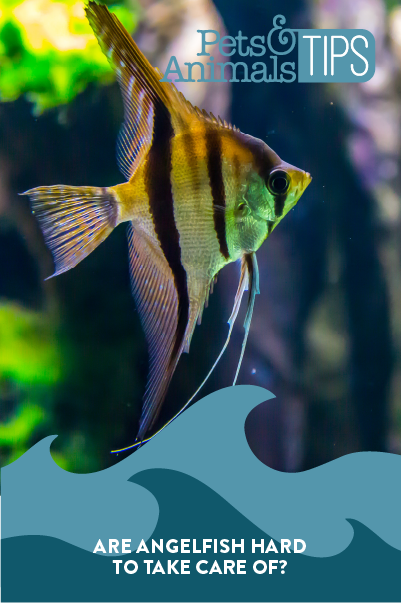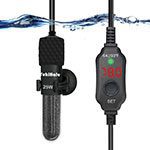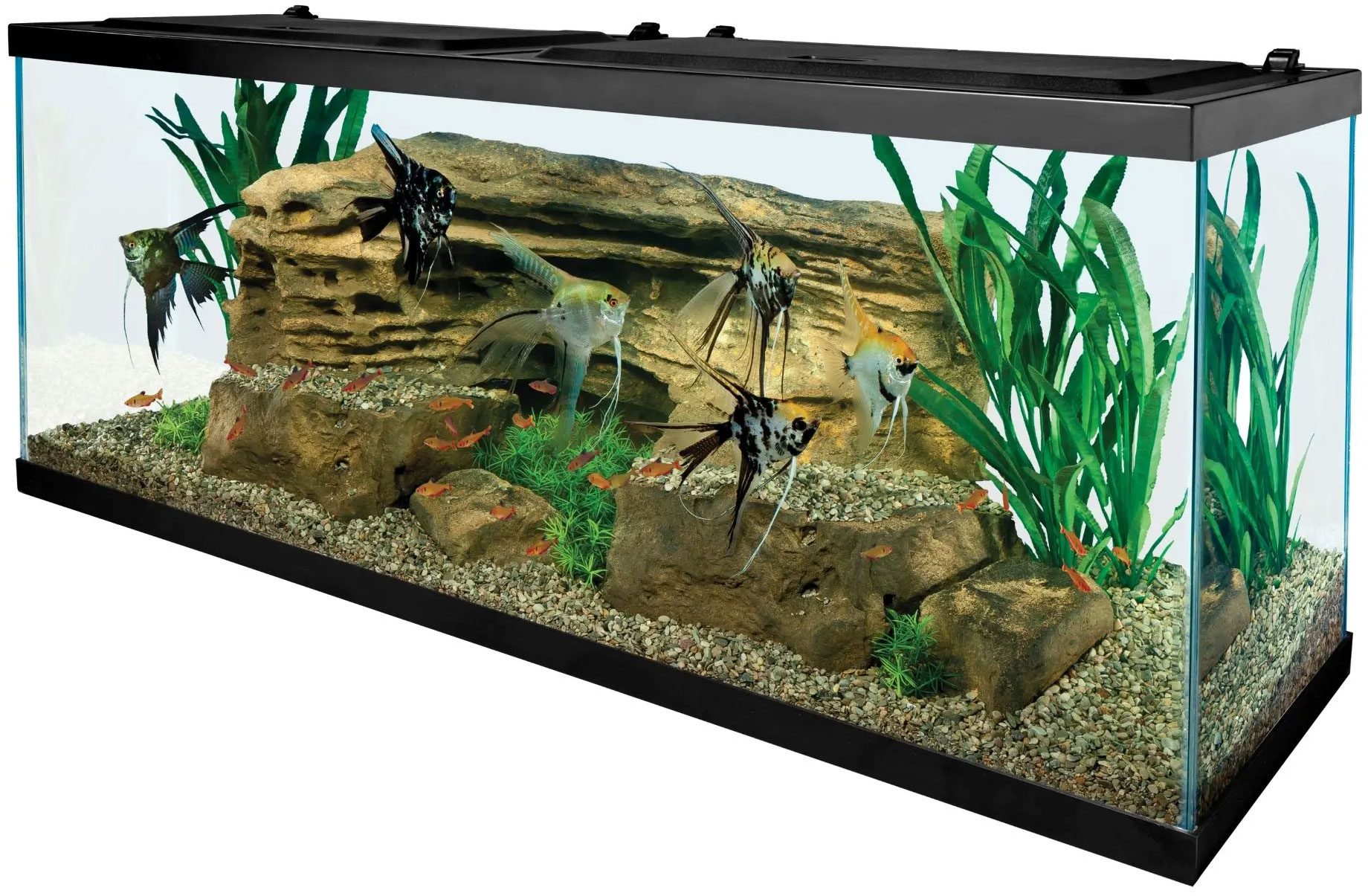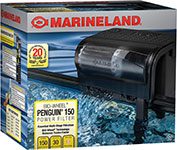Angelfish are the perfect pet option for many home aquarists. These fish are well-known for their graceful gliding, bright colors and elegant appearance. They are easy to keep and are also ideal for beginners.

For anyone who wishes to keep angelfish or learn more about the fish, this Q and A style article is the best place to begin. Below we’ll cover everything you need to know about freshwater angelfish care requirements.
Are Angelfish Hard To Take Care Of?
No, they are not. As stated above, angelfish is one of the easiest fish to keep. The only thing that you need to do is to provide a suitable, freshwater living environment. Pay attention to what you feed them, the size of the aquarium you provide, the fish’s tank mates and the water parameters.
Note that the fish is susceptible to bacterial infections. However, you can easily solve this issue by changing the water regularly and providing a good filtration system.
Do Angelfish Need a Heater?
Yes, angelfish require a heater in their tank. A vital part of angelfish care and survival involves providing your fish with the right water parameters. Freshwater angelfish excel in water temperature that ranges between 76 and 82 degrees Fahrenheit. Therefore, you must ensure your aquarium has suitable temperatures for your fish’s optimal health and happiness.
The best way to provide the ideal angelfish tank temperature is by using a heater. Some of the best heaters for your fish tank include the Fluval Submersible Glass Aquarium Heater and the YukiHalu Small Submersible Aquarium Heater.
What Do Angelfish Like in Their Tank?
When providing freshwater angelfish care, you should aim to mimic their natural environment in the tropical region. The natural habitat of the fish comprises many plants. Therefore, having many plants in your aquarium is a good idea. These plants will help oxygenate the tank and decrease the ammonia levels in the aquarium, ensuring your fish is healthy and happy.
Some of the plants that fish hobbyists recommend include water sprite, Amazon sword plants, java fern and Java moss. Apart from plants, an angelfish tank needs smooth rocks and wood for decoration. Avoid decorations with sharp edges, as they may harm your fish.
In addition, angelfish also need tank mates in their aquarium. When choosing the appropriate tank mates for your angelfish, look for non-aggressive species. Fish that will nip fins are not ideal. Generally, angelfish are peaceful fish. However, they can be territorial during breeding and are aggressive eaters. Thus, go for docile tank mates. Some of the best tank mates for your angelfish are other angelfish, plecos, corydoras, gouramis, rasboras and rainbow fish.
How many gallons do angelfish need in their tank?
Angelfish can grow to be large in size. Therefore, one of the most crucial angelfish tank requirements is a tall aquarium to accommodate the large size of a full-grown angelfish. Also, note that angelfish need enough room to swim. Thus, the bigger a fish tank, the better for your fish to be healthy and happy. The minimum recommended size by fish hobbyists is a 20-gallon tank. However, if you intend to keep several fish in the same tank, consider a 55-gallon or larger-gallon tank.
Do angelfish need a bubbler?
A vital section of angelfish care tips involves aquarium aeration. Freshwater angelfish require oxygen in abundance for survival. However, a bubbler is not necessary. You can use several options to produce oxygen in water, such as by using filters.
Water filters ensure gas exchange takes place, where oxygen from the air gets into the water and carbon dioxide gets out of the water. In addition, plants in the aquarium can help with water oxygenation. The plants absorb carbon dioxide and release oxygen, ensuring your fish can access clean air. Therefore, provide both floating and sinking plants in the aquarium.
Do angelfish need a filter?
Fish hobbyists recommend that you provide your angelfish tank with a filter. However, this filter is not necessary. You may operate your tank without a filter, but you will need to do a 25% weekly water change. This water change will help to remove chemical and solid impurities. You should also add freshwater that contains minerals in the tank.
Live plants and the angelfish consume the minerals. The minerals will benefit the plants, as they will help keep them alive. Note that live plants will help with water oxygenation and keep the water clean by taking in all chemical impurities.
What are the best water parameter requirements for angelfish?
Apart from the above-stated water temperature, you will need to focus on pH. One of the best things about angelfish is that they can thrive in a vast range of water conditions. However, it is best to keep the water parameters similar to that of their natural habitat.
The most appropriate pH for the water should lie between 6.8 and 7.8. On the other hand, the hardness should be between 3° and 8° dKH. Make sure to have a good filtration system and change the water every week.
What Food Do Angelfish Take?
Angelfish thrive on a protein-rich diet. They consume crustaceans, larvae, insects and invertebrates in their natural habitat. Thus, mimicking the same protein-rich diet in the aquarium would be best. You can feed your fish Mysis shrimp, brine shrimp and bloodworms for live foods.
Note that live foods can transfer bacteria to your tank. Therefore, make sure to buy from reputable stores and feed your fish live foods after every three to four days. Your fish will also thrive on shrimp pellets, tropical granules, flakes, and vegetables. For optimal results, rotate your angelfish’s diet and feed them small amounts that they can take in two to three minutes once or twice a day.
Conclusion
Angelfish are a very easy fish species to care for. However, fish owners should prioritize providing the right tank requirements, including tank size, water temperature, pH, decorations, tank mates and water changes. If you opt to have tank mates, ensure they are docile.





